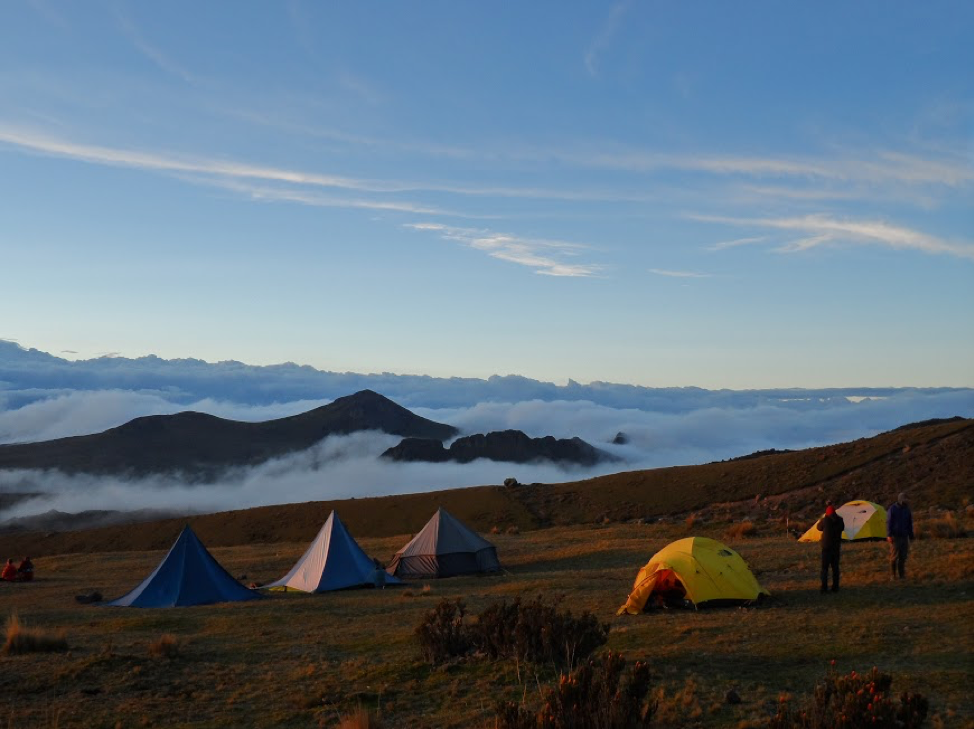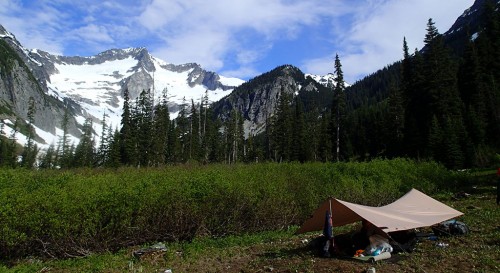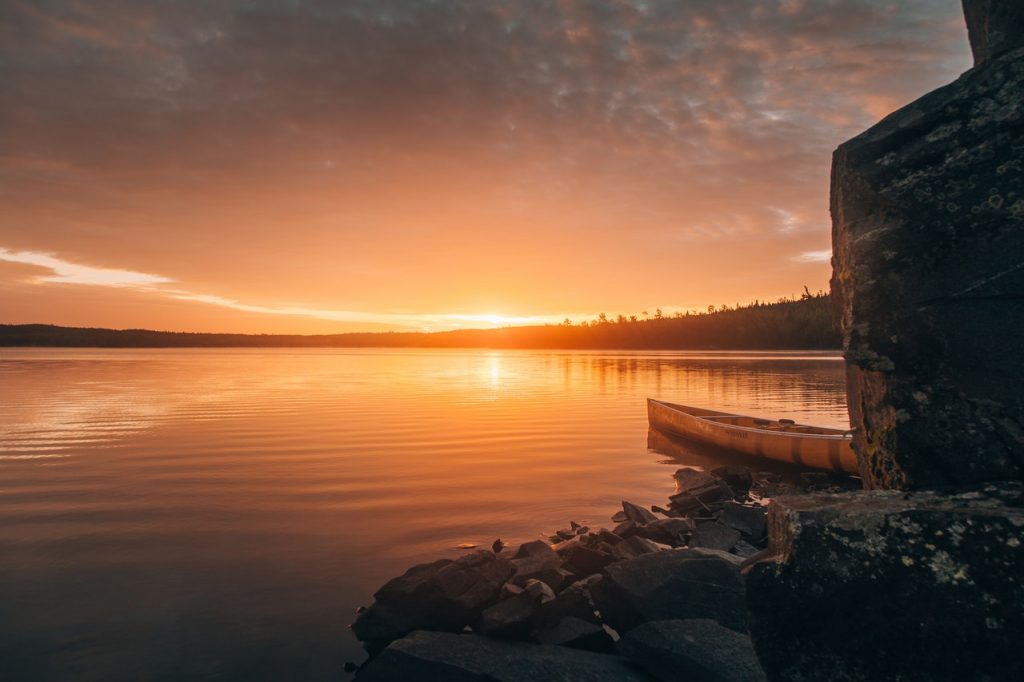In the wake of the murder of George Floyd, our society has been called to take a hard look, and take action against, one of our major underlying national cornerstones: Racism.
During this crisis, it’s easy to recognize the divide between white privilege and black oppression in police brutality, wealth disparity and public perception of protesters.
Just as prevalent is the limited access that Black Americans have to outdoor spaces.
As outdoor educators and enthusiasts, we—Outward Bound—must recognize this divide, even if it seems trivial compared to more pressing issues. The smallest stone can’t be unturned as we root out racism in America, and while it may seem less important, the small stone I find myself rooted upon often is the outdoors.
Cue the obvious rebuttals: “How hard is it to go outside? Can’t you just walk out your front door and enjoy all that Nature provides?” “What am I supposed to do about it?”
You’d be surprised. Let’s turn this stone over.

Photo by Rohan Roy.
Going Outdoors is Easy…When You’ve Been Raised There
Let’s look at some numbers:
- According to the 2010 U.S. Census, the population of Rural America is 77.8% White as opposed to 8.2% Black
- Visitors to America’s Public Lands are 88-95% White vs. 1-1.2% Black
- Of the rural land in the United States, Black Americans own <1%. White Americans? 98%
- The five largest landowners in America, all white, own more rural land than all of Black America combined
When White Americans are raised in or around the country—or at least have regular access to it—they’re exposed to the outdoors on a regular basis. Being outside in wide-open spaces is a birth-right, a pleasure passed down from parent to child. I remember taking walks through my uncle’s apple orchard, picnicking in the local park or building rafts (most sinking immediately) with my childhood friends.
For a majority of Black Americans, this is a gift that may not be passed. After the Civil War, freedpeople were granted land as reparation for the horrors of slavery. Upon Abraham Lincoln’s assassination, however, President Andrew Johnson began pardoning Southerners and took the land back, regifting it to those that had declared war against the United States.
Due to these diminishing economic prospects and racial discrimination after the Reconstruction, Black Americans migrated to urban areas, seeking the promise of honest work and wages. Due to redlining and other forms of segregation, African-Americans had limited choices when it came to where they lived in metropolitan areas.
“I grew up in kind of a rough neighborhood on the south side of Chicago, so my mother kept us in a lot. Our house was across the street from a public park but it was rife with gang violence so we never went there.” -Aaron Jones
Aaron Jones is now an avid hiker who promises that his daughter will experience the wonders of Nature–something that he did not understand until he was an adult.
“I always knew about hiking and camping from commercials and magazines. But the people doing it didn’t look like me. They were white, athletic and attractive. I’d never, ever seen anybody of color doing it, let alone a black male; I associated the outdoors with whiteness.”
While black concentration within urban environments is no longer as extreme, the fact still remains that spending time in wide-open green spaces may still lag behind for African-Americans. And it’s more than simply physical distance and under-representation that can keep African-Americans from enjoying the beauty of this country.
Fear is an obstacle as well. The American backcountry has not always been a hospitable place for African-Americans.

Photo by Jaclyn Long.
Bad Things Happen In The Woods
“…we were never encouraged to go far from the house. The feeling was that if you went out into the woods by yourself – and you’re black – if no one’s around, you might not end up coming back.” -Marjorie Leach Parker
Marjorie Leach Parker is an outdoor enthusiast in Virginia Beach, Virginia. As the first African-American woman chapter chair for the Sierra Club in the state of Virginia, she promises to uphold their mission statement:
To explore, enjoy, and protect the wild places of the earth;
To practice and promote the responsible use of the earth’s ecosystems and resources;
To educate and enlist humanity to protect and restore the quality of the natural and human environment; and to use all lawful means to carry out these objectives.
She also doesn’t go hiking alone.
“I live within walking distance of a nature trail and I would never go there by myself. It’s not the younger generation but the older generation that you see that look at you like you have no business there.”
How, in 2020, is the great outdoors still a scary place for Black Americans to be? One answer may be Transgenerational Trauma.
What happens when you can’t control your response to the surrounding environment?
Trauma, the severe psychological distress following a terrible or life-threatening event, can alter a person’s relationship with their environment irrevocably. And studies are showing that trauma may be inherited.
While the research is still limited, the study of epigenetics (the means through which environmental influences can influence our genetic expression and, by extension, psychology and behavior) is showing promising evidence that negative effects of trauma like anxiety, depression, and emotional dysregulation, are prevalent in the children of survivors of trauma–even if the child never experienced it themselves.
So while the woods today may seemingly present fewer terrors, for a person that has been handed a genetic code from those that lived through the Jim Crow era and associate the woods with the trauma of slavery and lynchings, it may be more difficult work to overcome these barriers.
And, unfortunately, while we all may hope and think that racial terror in the woods has all but disappeared, they continue to occur. Recently, an interracial family in Spokane, Washington was harassed and trapped while attempting to have a weekend camping getaway.
Closing The Nature Gap
If we want to work to make the outdoors more inclusive for everyone, there are a few things that we can do.
1. Educate Yourself
Read up on the Freedman Bureau’s attempts to distribute land to freedmen after the Civil War and its subsequent opposition, first from Southern White Supremacist groups, and later by President Andrew Johnson.
Read about the National Park Service’s complicated racial past.
Read Black Faces, White Spaces, a fascinating look into the ways in which nature and the environment are racialized in America
2. Follow and Support Black Outdoor Leaders
Whether it’s on Instagram or donating to the cause, help these folks diversify the outdoors!
3. Lend a Hand!
Spending time in the outdoors can be expensive, time-consuming, and apprehensive for those with limited experience. Oftentimes, those who need time in nature the most are the ones that are left behind. There are a plethora of ways that you can help level the playing field so that everyone can enjoy the beauty of this world:
- Donate Gear. Ready to replace your trusty old tent? Instead of selling it, or worse trashing it, think about donating it! Whether it’s to someone you know who is interested in getting into camping or to a local non-profit, your donation will help more people get outside.
- Take Someone With You. Planning a weekend trip or day-hike? Invite others to come along, especially those that may have little outdoors experience. You could be the gateway for a person developing a life-long love of outdoor activities. Note: Be sure to listen and consider a person’s comfort level. Pressuring someone into something rarely benefits them.
- Join A Community. Whether it’s a climbing gym or your local chapter of the Sierra Club, you are bound to meet others with a vested interest in the outdoors. Your expanding community may put you in touch with other ways to help bring everybody into the fold.
- Donate Money. Find an organization that strives to provide access to the outdoors for all people (can be found in most major cities) and lend them a few bucks! For example, LOOP NOLA exists to address the lack of opportunity for urban children in New Orleans to experience the outdoors.
4. Invest in Diversity Initiatives
The seventh of the Ten Expeditionary Learning Principles drawn from our founder Kurt Hahn is stated as thus:
Diversity and Inclusion
Both diversity and inclusion increase the richness of ideas, creative power, problem-solving ability and respect for others. In Expeditionary Learning schools, students investigate and value their different histories and talents, as well as those of other communities’ cultures. Schools’ learning groups are heterogeneous.
The Outward Bound educational model, founded on the principle that we’re stronger together, builds on collectively facing often insurmountable challenges and learning through those experiences. Our core values point us to continual improvement and learning, even when it’s hard, challenges our own assumptions, and establishes processes that may be unpleasant. As we embrace this critical work, we invite you, as our Outward Bound community, to join us on this journey—with the full understanding that we’re not experts but rather we’re students discovering what may be possible, together.

This history of the United States may be one of inequality, but that doesn’t mean that the future must follow suit. The land of this nation has always been a blank slate that cares nothing for a person’s race, ethnicity, background or economic status. Unfortunately, the slate was painted by the prejudice of human beings.
Are we strong enough, this time, to take the land back, and share it with everyone?




